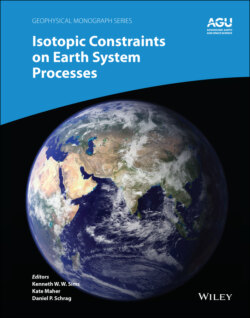Читать книгу Isotopic Constraints on Earth System Processes - Группа авторов - Страница 12
PREFACE
ОглавлениеThe exploration of geologic processes using small and often barely measurable variations in the abundance of certain isotopes has been central to unraveling the dynamic processes and interconnected systems that shape our planet. Through careful measurements and a quantitative interpretation of isotopic abundances and their natural variations in Earth materials, isotope geochemists have established the absolute age of the Earth; the timescales of differentiation and remixing that have formed our chemically and mechanically segregated planet; the ages of the continents; the rates of orogenesis and weathering; the evolution of our planet’s climate; the rates of mass transfer between key reservoirs; and even a better understanding of the nexus between geology and life.
These insights into the origins and workings of our Earth are truly profound; even still, the potential of using isotopes to further elucidate our understanding of Earth (and life) science continues to grow. A few decades ago, only a handful of isotope systems were routinely analyzed. Today, recent advancements in mass spectrometry have enabled us to measure the isotopic abundances of almost every element in the periodic table precisely and accurately. Predictably, the application of newly available isotope systems is leading to new ideas, new models, new experiments, and a deeper understanding of Earth system science.
In this volume, we have compiled a collection of papers, written by former students, post‐docs, collaborators, and friends of Donald J. DePaolo. These papers’ topics range from large‐scale, geologic processes to small‐scale, metabolic processes, and are broadly grouped into two simple categories: High‐Temperature/Deep Earth Processes and Low‐Temperature/Shallow Earth Processes. There are other possible ways to organize these contributions – radiogenic versus stable isotope systems; geologic past versus modern; land versus ocean; and many more. However, given the breadth of Don’s contributions over his illustrious career, these divisions are illusory. Don’s early work on mantle heterogeneity contributed to his later work on strontium isotopes in seawater. His work on measuring the timescales of metamorphic processes contributed to his work on using isotopes in hydrology.
Across the diverse contributions in this book, we hope you will see a series of common themes: careful measurements, the use of simple physical models of processes, and an appreciation for how different components of the Earth system interact.
In the following paragraphs, we briefly overview each of this monograph’s chapters and explain how each studies’ research ultimately relates back to the authors’ academic collaborations with Don.
